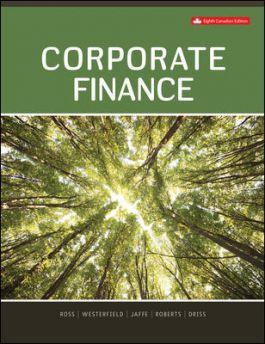Question
Companies often buy bonds to meet a future liability or cash outlay. Such an investment is called a dedicated portfolio since the proceeds of the
Companies often buy bonds to meet a future liability or cash outlay. Such an investment is called a dedicated portfolio since the proceeds of the portfolio are dedicated to the future liability. In such a case, the portfolio is subject to reinvestment risk. Reinvestment risk occurs because the company will be reinvesting the coupon payments it receives. If the YTM on similar bonds falls, these coupon payments will be reinvested at a lower interest rate, which will result in a portfolio value that is lower than desired at maturity. Of course, if interest rates increase, the portfolio value at maturity will be higher than needed.Suppose Ice Cubes, Inc. has the following liability due in five years. The company is going to buy bonds today in order to meet the future obligation. The liability and current YTM are below.Amount of liability: $100,000,000 Current YTM:8%At the current YTM, what is the face value of the bonds the company has to purchase today in order to meet its future obligation? Assume that the bonds in the relevant range will have the same coupon rate as the current YTM and these bonds make semiannual coupon payments.Assume that the interest rates remain constant for the next five years. Thus, when the company reinvests the coupon payments, it will reinvest at the current YTM. What is the value of the portfolio in five years?Assume that immediately after the company purchases the bonds, interest rates either rise or fall by one percent. What is the value of the portfolio in five years under these circumstances?One way to eliminate reinvestment risk is called immunization. Rather than buying bonds with the same maturity as the liability, the company instead buys bonds with the same duration as the liability. If you think about the dedicated portfolio, if the interest rate falls, the future value of the reinvested coupon payments decreases. However, as interest rates fall, the price of the bond increases. These effects offset each other in an immunized portfolio. Another advantage of using duration to immunize a portfolio is that the duration of a portfolio is simply the weighted average of the duration of the assets in the portfolio. In other words, to find the duration of a portfolio, you simply take the weight of each asset multiplied by its duration and then sum the results.
Questions 1-8 should be answered by building a 15-period binomial model whose parameters should be calibrated to a Black-Scholes geometric Brownian motion model with: T=.25 years,S0=100 , r=2%, =30% and a dividend yield of c=1%.
Your binomial model should use a value of u=1.0395.... (This has been rounded to four decimal places but you should not do any rounding in your spreadsheet calculations.)
1. Compute the price of an American call option with strike K=110 and maturity T=.25 years.
2. Compute the price of an American put option with strike K=110and maturity T=.25 years.
3.Is it ever optimal to early exercise the put option of Question 2? YES or NO.
4.If your answer to Question 3 is "Yes", when is the earliest period at which it might be optimal to early exercise? (If your answer to Question 3 is "No", then you should submit an answer of 15 since exercising after 15 periods is not an early exercise.)
5. Do the call and put option prices of Questions 1 and 2 satisfy put-call parity? YES or NO.
6.Compute the fair value of an American call option with strike k=100 and maturity periods n=10where the option is written on a futures contract that expires after 15 periods. The futures contract is on the same underlying security of the previous questions.
7.What is the earliest time period in which you might want to exercise the American futures option of Question 6?
8.Compute the fair value of a chooser option which expires after n=10 periods. At expiration the owner of the chooser gets to choose (at no cost) a European call option or a European put option. The call and put each have strike k=100 and they mature 5 periods later, i.e. at n=15.
Microsoft Word - Assignment1QA.docx
- Assume your company has a contract to purchase 100 computers from a Korean company. The payment is due on receipt of the shipment and must be delivered in Korea on 1 December 2016. On 1 July 2016, when you are arranging the contract, the computers are priced at 500,000 won each. On 1 July 2016, the spot exchange rate is AU$1 in exchange for 1,250 won (KRW). Assume that the 6-month interest rate in Korea is 3% and the rate in Australia is 5%. Assume that the covered interest parity holds.
- (A) Calculate the Australian dollar price (on 1 July 2016) of one unit of Korean currency (rounding to 4 decimal places).
- (B) What is the total price of the computers in Australian dollars on 1 July 2016 (rounding to 2 decimal places)?
- (C) Calculate the 6-month forward exchange rate, FKRW/$, under the covered interest parity (rounding to 2 decimal places). Note that the forward rate is defined as the Korean won per AU$1. Hint: Use the CIP equation.
Step by Step Solution
There are 3 Steps involved in it
Step: 1

Get Instant Access to Expert-Tailored Solutions
See step-by-step solutions with expert insights and AI powered tools for academic success
Step: 2

Step: 3

Ace Your Homework with AI
Get the answers you need in no time with our AI-driven, step-by-step assistance
Get Started


